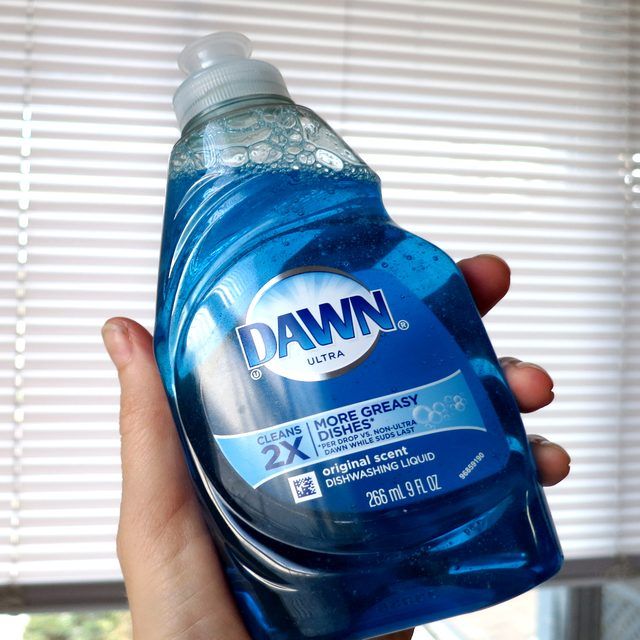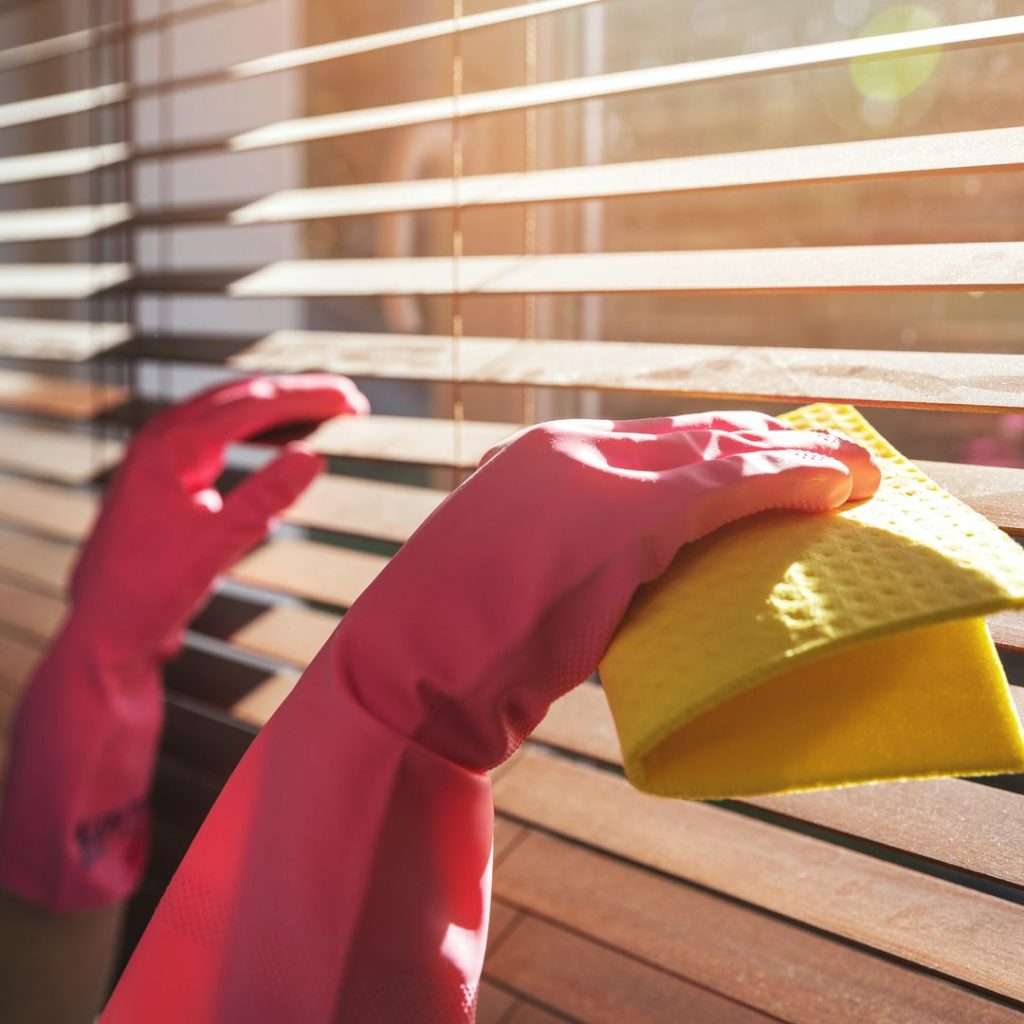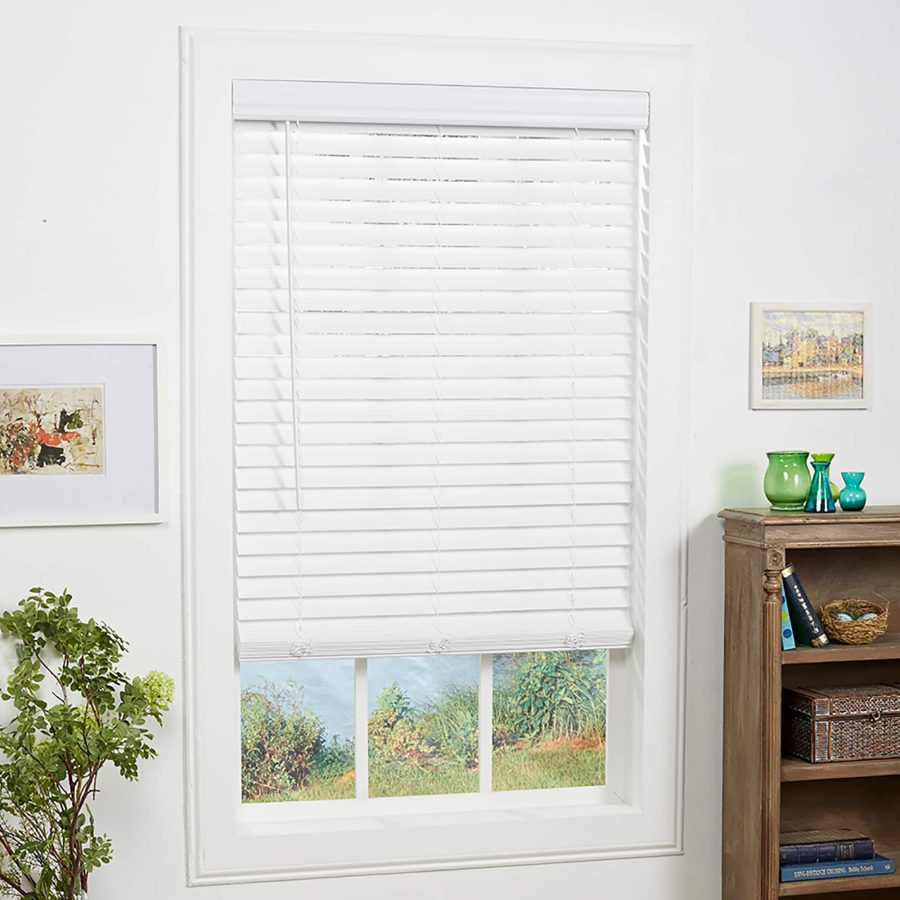Introduction
How to clean greasy blinds – Cleaning greasy blinds can be a daunting task, but with the right approach and materials, you can make your blinds look as good as new. Over time, kitchen blinds, in particular, tend to accumulate a layer of grease and dust, which not only looks unsightly but can also affect their functionality. Here’s a comprehensive guide on how to effectively clean greasy blinds:

Gather Your Cleaning Supplies
Before you start, ensure you have all the necessary cleaning tools and solutions. You will need:
- A microfiber cloth or soft brush (an old toothbrush works well for tight spots)
- A bowl of warm water mixed with a mild detergent (dish soap is great)
- White vinegar (for stubborn grease)
- Rubber gloves (optional, but recommended if you have sensitive skin)
- A clean, dry towel or cloth for drying
- A ladder or step stool (if needed for high blinds)
- A blind cleaning tool or a pair of tongs wrapped in a microfiber cloth (optional)
Dust Off Loose Debris
Begin by closing the blinds to access one side at a time. Use a microfiber cloth or a duster to gently wipe away any loose dust and debris. For hard-to-reach areas, a soft brush or the brush attachment on your vacuum cleaner can be helpful.
Prepare Your Cleaning Solution
In a bowl, mix warm water with a few drops of dish soap to create a soapy solution. For heavy grease buildup, you can add equal parts of white vinegar to the solution for its grease-cutting properties.
Clean Each Slat Individually
Wearing rubber gloves, dip a corner of your microfiber cloth into the cleaning solution and wring it out well to avoid dripping. Gently rub each slat of the blind, starting from the top and working your way down. For particularly greasy spots, apply a small amount of undiluted vinegar directly onto the cloth before wiping. Be careful not to apply too much pressure, as this could bend or damage the blinds.
Rinse and Dry
If your blinds are made of materials that can withstand moisture, such as metal or plastic, you can rinse them with clean water after cleaning. Use a spray bottle filled with clean water or a damp cloth to remove any soap residue. For wooden blinds or those that cannot get wet, simply use a dry cloth to wipe away any remaining soap. Once cleaned, open the blinds fully and allow them to air-dry completely before closing them again. Alternatively, use a clean, dry cloth to speed up the drying process.
Tackle Stubborn Stains and Grease
For extremely stubborn stains or grease that won’t budge, consider using a specialized blind cleaner or a paste made from baking soda and water. Apply the paste to the affected area, let it sit for a few minutes, then scrub gently with a soft brush before wiping clean.
Routine Maintenance
To prevent future build-up, try to clean your blinds regularly, ideally every few months or more frequently if you cook often. A quick dusting with a microfiber cloth or using a vacuum cleaner with a brush attachment can go a long way in maintaining their cleanliness.
Additional Tips:
- Always check the manufacturer’s instructions before cleaning to ensure you’re using appropriate methods and solutions for your specific type of blinds.
- If you have fabric blinds, avoid soaking them in water as it may cause shrinkage or damage. Instead, use a gentle vacuuming method or spot clean with a fabric cleaner.
- For vertical blinds, consider taking them down for a thorough cleaning if they are heavily soiled.
By following these steps, you can effectively remove grease and grime from your blinds, restoring their appearance and ensuring a fresher environment in your home.

Tools and Materials You’ll Need:
- Vacuum Cleaner with Brush Attachment: Ideal for initial dust removal.
- Microfiber Cloths: Use for wiping down blinds.
- Bowl of Warm Water: To dilute cleaning solutions.
- Mild Dish Soap or Vinegar: Effective for cutting through grease.
- Rubber Gloves: Protect your hands from cleaning solutions.
- Sponge or Soft Brush: For more thorough scrubbing if needed.
- Dry Towels or Paper Towels: To dry blinds after cleaning.
Step-by-Step Cleaning Process:
Prepare the Area:
- Clear the area around the blinds to prevent anything from getting wet or stained during cleaning.
- If possible, remove blinds from their brackets for easier handling.
Dust Removal:
- Use a vacuum cleaner with a brush attachment to gently vacuum both sides of the blinds. Start from the top and work your way down.
- Alternatively, use a microfiber cloth or duster to wipe away loose dust.
Spot Cleaning:
- Identify areas with heavy grease buildup. Mix a small amount of mild dish soap or vinegar with warm water in a bowl.
- Wear rubber gloves and dip a microfiber cloth into the solution. Wring out excess water to avoid dripping.
- Gently wipe the affected areas of the blinds, applying slight pressure as needed to lift grease.
Deep Cleaning:
- For stubborn grease spots, use a sponge or soft brush dipped in the cleaning solution.
- Work in small sections, starting from the top of the blinds and moving downward.
- Rinse your sponge or cloth frequently in clean water to avoid spreading grease around.
Rinse and Dry:
- Once you’ve cleaned all sections, rinse the blinds by wiping them down with a clean, damp microfiber cloth or sponge.
- Immediately dry each slat with a dry microfiber cloth or paper towel to prevent water spots or streaks.
Rehang or Air Dry:
- Allow the blinds to air dry completely before rehanging them in their brackets.
- If feasible, lay them flat on a towel to air dry, flipping them over to ensure both sides dry thoroughly.
Maintenance Tips:
- Regularly dust blinds with a microfiber cloth or duster to prevent grease buildup.
- Consider using a dust-repellent spray or polish designed for blinds to make future cleanings easier.
- Avoid harsh chemicals or abrasive cleaners that can damage blinds’ surfaces.
Additional Tips:
- Fabric Blinds: Check manufacturer’s recommendations before cleaning. Some may be machine washable, while others require spot cleaning.
- Wood Blinds: Use a wood-specific cleaner or mild soap and water, being careful not to saturate the wood.
- Vinyl or Aluminum Blinds: These can often withstand more vigorous cleaning with soap and water, but avoid scrubbing too hard to prevent damage.

Tips for Different Types of Blinds:
Wooden Blinds:
- Wooden blinds require extra care to prevent damage. Avoid excessive moisture and harsh chemicals. Use a barely damp cloth with a mild cleaner designed for wood surfaces.
Fabric Blinds:
- Fabric blinds can be delicate. Vacuum them regularly with a brush attachment or use a lint roller to remove dust. Spot clean with a gentle detergent or consider professional cleaning for deep stains.
Metal or Vinyl Blinds:
- Metal and vinyl blinds are more durable and can withstand more vigorous cleaning methods. However, avoid abrasive materials that could scratch the surface. Use mild cleaners and rinse thoroughly.
Conclusion:
Cleaning greasy blinds requires patience and attention to detail, but with the right tools and methods, you can effectively remove built-up grease and restore your blinds to their original condition. Regular maintenance and gentle cleaning practices will help prolong the life of your blinds and keep your living space looking fresh and clean. Incorporate these tips into your cleaning routine to ensure your blinds remain a clean and functional part of your home decor.
